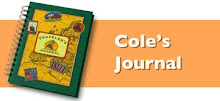
After a few nights on the river, our next stay was in Luxombourg, Luxombourg. We learned the official language is Letzeburgesch, but you also see and hear a lot of French and German. Obviously we tried to get away with as much English as possible. I can also tell you we found it to be rather expensive. And I’m not sure if the city ever had a moat, but there are rather large cliffs on all sides of the downtown, a strategic defense position I would assume.
The next morning we straddled the Belgium / German border on our way to Aachen. We had a few stops planned along the way with our first one in Bastogne, Belgium. History buffs will recognize this town for its prominent role during the Battle of the Bulge in World War II. We started with a visit to a couple of stores dedicated to old war memorabilia, which was very cool. We also spent time talking with several locals to inquire about other sites in the area to visit. We got some great advice and after visiting a few of the monuments, we found ourselves smack dab in the middle of several old battlefields. A lot of the area is still very dangerous to visit with unexploded devices killing several people every year. In fact, the local logging companies use armored vehicles with v-shaped bottoms. But we got some great directions on exactly where to go and found ourselves way off the beaten path, entering forests filled with old foxholes. They told us which holes belonged to which armies and who attacked whom from where. Standing under the pines in this setting, imagining a blanket of snow and soldiers all around was gripping for us all. I can’t wait to watch Band of Brothers again when we get home. While the movie was actually shot in the Czech Republic, a lot of it is about time spent in these exact foxholes. We looked for bullets on the ground, but a thick blanket of moss covers most of the area. With a metal detector I’m sure you’d have a lot more success, although we did come across some old metal parts and buckles.
After we finished up in the foxholes is was on to La Gleize, where they have an old German Tiger Tank on display. They were definitely the most feared during the war, but unfortunately for the Germans, they never had time to build enough. Tank 213, pictured below, was abandoned by the Germans during the Battle of the Bulge. They figured it either ran out of gas or had a mechanical malfunction. When the Americans retook the area it was found in, they used it for target practice. Round after round of bazookas never put a dent in it. After passing through Malmedy, our next stop was in Herzogenrath, just south of Aachen. The area around Aachen is one of the best spots to see the Dragon’s Teeth along the old Siegfried Line. Laid to deter tanks and other military vehicles from advancing, the Germans destroyed most of them after the war. It was a busy day and everyone was ready to relax in Aachen.
You don’t really find Aachen in any tourbooks. We chose it because of several sights we planned to visit in the area. But I must say we were pleasantly surprised. It’s a town of about 250,000, with 40,000 of those college students. While the outskirts were nothing to write home about, the city center was packed with people, festivals, historical landmarks, and shopping. Our timing was perfect for Cole as they were hosting and old car rally in town. They also had a couple of children’s festivals going on in different squares. It’s most famous resident was Charlemagne, considered by many as the “founding father of Europe” and the “epitome of an ideal ruler”. His tomb resides in the local chapel, a chapel in which 30+ German Kings have been crowned.
















